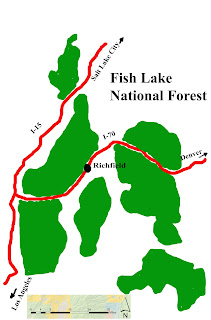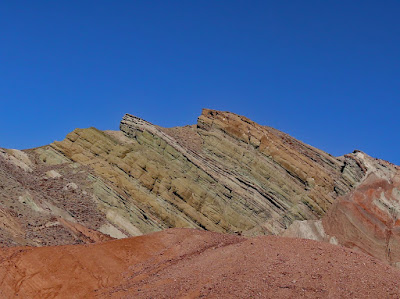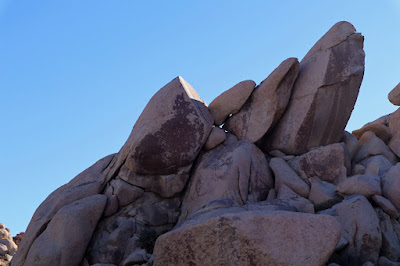Smokescreens were originally clouds of smoke created to conceal military operations, but the term has come to mean a ruse designed to disguise real intentions. I created a ruse to conceal my true intentions for this adventure by saying I was going to a place where nobody goes. I assume that nobody believed that I could go where absolutely, including me, goes. I closed my last blog post saying, “Maybe it’s an adventure of gross ignorance, outright lying, or of poetic definition. I promise to tell you before it’s over.” And now I will.
I put up a blog post saying I would go where nobody goes, and
then started figuring out how I would do it.
After a month’s hard study, I settled on a town in central Utah, which is
surrounded by public land that few people visit, and if they do, they miss what
appears from maps and satellite imagery, inaccessible by normal means.
I decided to teach myself how to go where nobody goes. I needed a deadline to get me started. So I reserved a room in Richfield, Utah, to use as base camp. Then after a month’s hard study, I departed. Where exactly was I going from base camp, was still an open question I would figure it out when I get there. The important thing was keeping a safe distance from crowds. I printed out directions for the carefully selected sites that I would visit, the ones that would serve my purpose. I was hooked.
Having arrived in Richfield, I have stayed here every night here for the past two weeks. I have hiked a high peak, scrambled to an old gold-rush settlement where the abandoned wagon roads are barely discernable, driven on rough roads in the desert in search of lava tubes and hot springs which were not where my maps said they were.
A lot of people live in Richfield and a lot more pass through it on I-70. But the travelers do not come here as a destination. Richfield in the largest town for over a hundred miles in any direction, and they use it as stopover on their long drives. The local people serve the travelers with motels, gas stations and chain restaurants at the two freeway exits.
 |
| Two Hours and Forty Miles Later |
Unlike them, I came because of the Fish Lake National Forest, which flanks Richfield on two sides. Maps of trails in the Forest are almost entirely wrong, by my experience, and if anyone wants to follow what I am doing here, I can give you what the forest service seems unable to provide, but only for the small portion of the Fish Lake that I visited. In two weeks I have risen along a gradual arc from “know almost nothing at all” to “pretty thorough acquaintanceship.”
 |
| Main Street, Richfield, Utah |
I suppose you are wondering how the above pictures relate to my story. I have described the smokescreen of “where nobody goes,” Now lets talk about smoke signals.
 |
| Little Wonder Café in Richfield |
The next morning I went to the Little Wonder Café, a local place not easy for travelers to find, and sat with the old men who come there every morning. They were talking about yesterday’s “control burn.” We all agreed that the plume of smoke was too fierce-looking to be a control burn, which the forest service often does during conditions when fire will burn slowly. But no rain had fallen in over a month; everything was very dry. “There’s no such thing as a control burn,” one of them said.
 |
| Two days after I first saw the plume of smoke |
Two days later, smoke still hangs over the mountain. A strong wind is pushing it. I wonder what people near Santa Fe, NM, think about control burns as they look at the foundations of what used to be their homes. Smoke signals are used to transmit news, signal danger, or to gather people to a common area. They could often be seen from as far away as fifty miles. This smoke signal made us wonder if a little diminished mental capacity was involved or if foresters have become so afraid of wildfires that they use control burns even in risky conditions.
















































